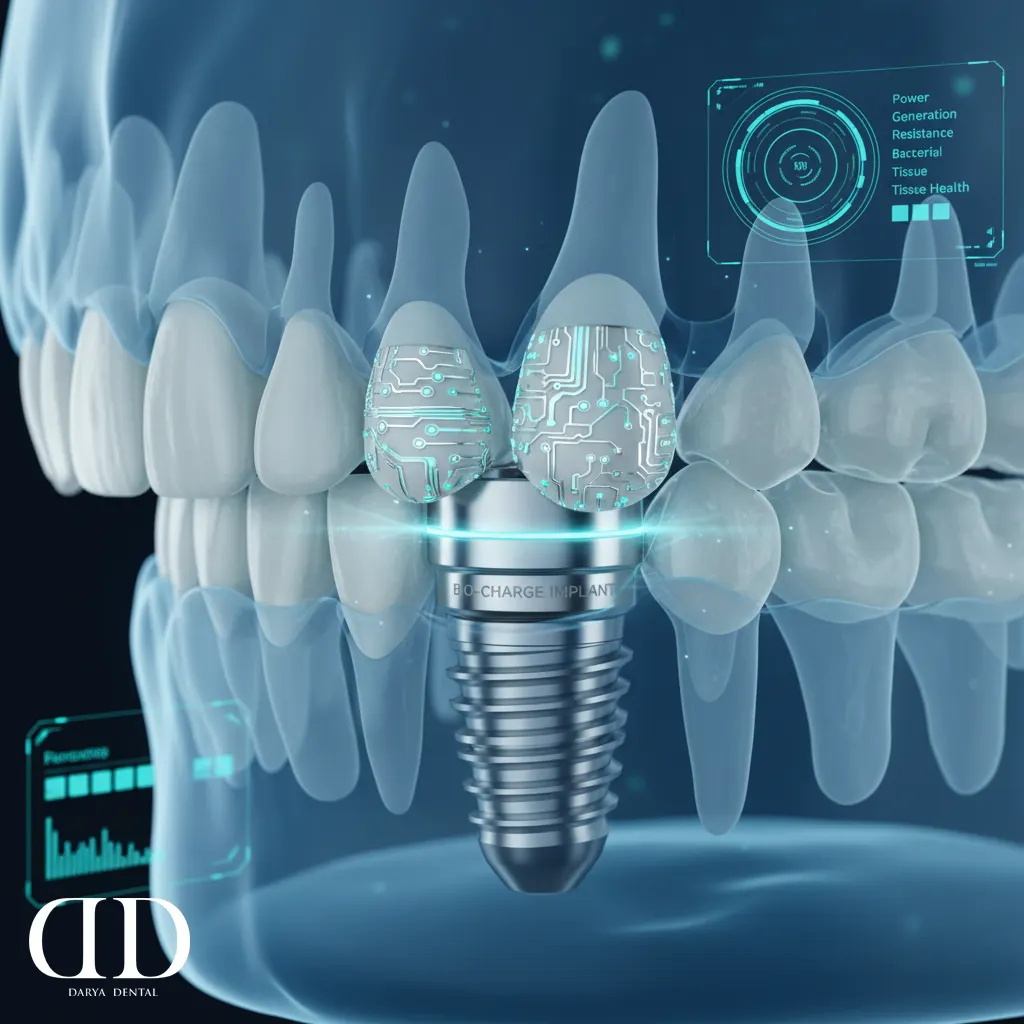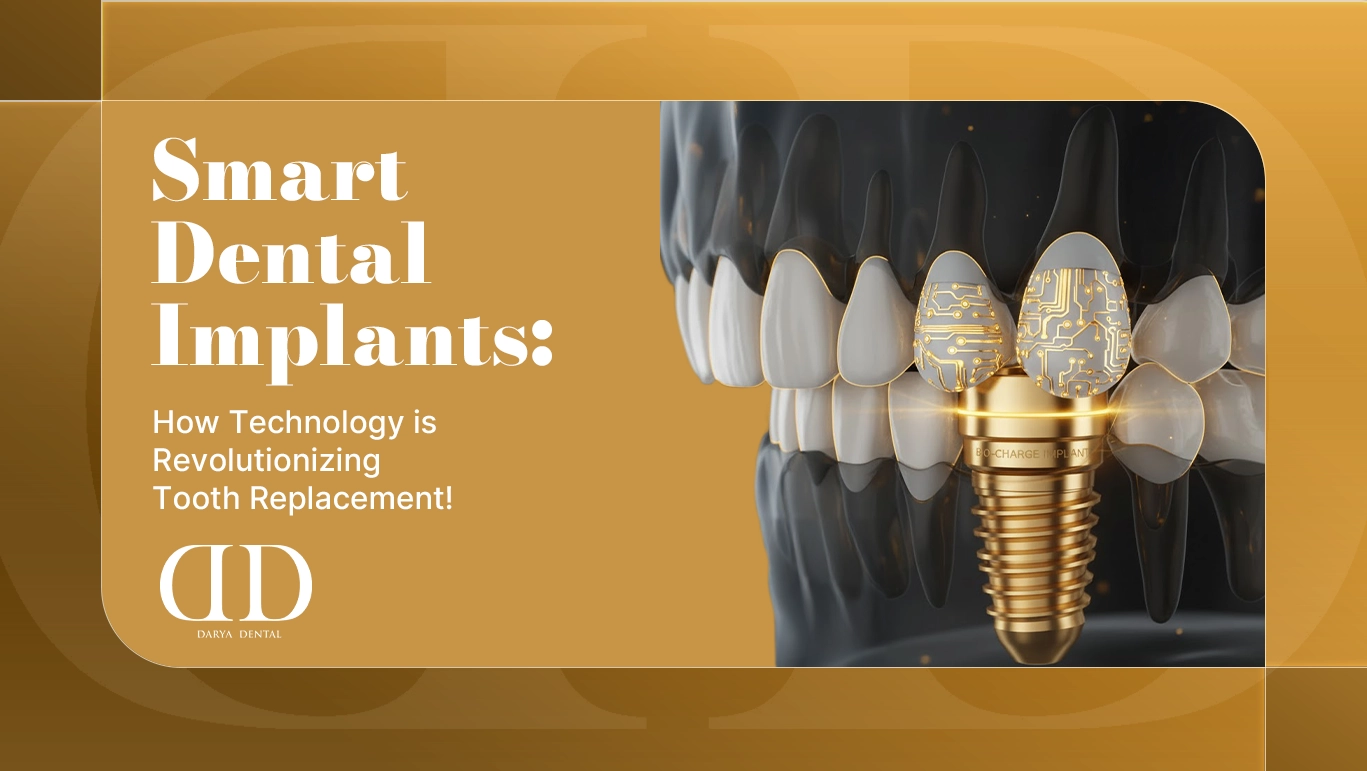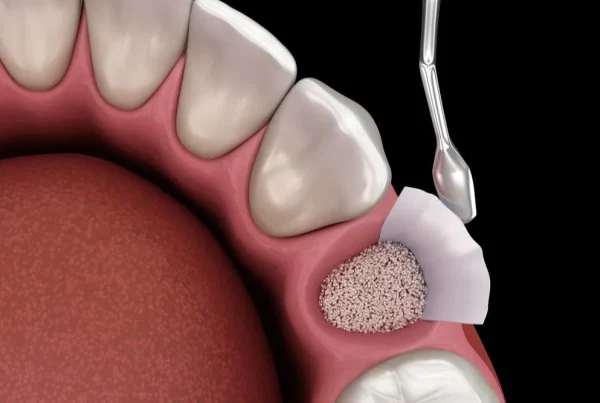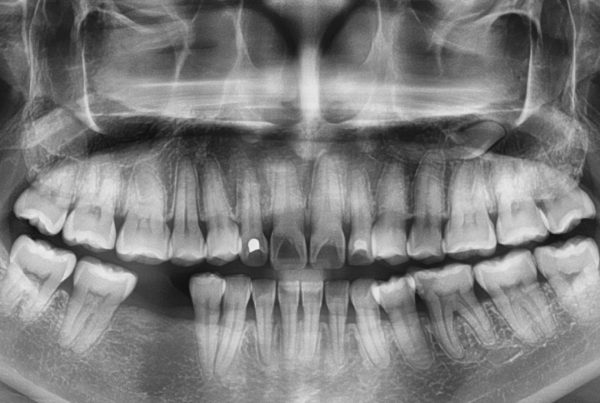
Your dental implant could soon be smarter than your smartphone. That’s not hyperbole—it’s the reality of where dental technology is heading right now. While most people think of dental implants as simple titanium screws that replace missing teeth, researchers are developing something far more sophisticated: smart dental implants that can monitor your oral health, detect problems before they become serious, and even communicate with your dentist in real time.
I’ve been following developments in dental technology for years, and nothing has captured my attention quite like the emergence of intelligent implants. These aren’t just improvements on existing technology—they represent a fundamental shift in how we think about dental care. Instead of reactive treatment, we’re moving toward proactive monitoring and prevention.
The implications go far beyond just convenience. We’re talking about technology that could prevent implant failures, detect early signs of infection, monitor bite forces, and provide data that helps dentists deliver more personalized care. Let’s explore what smart dental implants are, how they work, and what they mean for the future of your oral health.
What Are Smart Dental Implants?
To understand smart dental implants, we first need to grasp what makes them “smart.” Traditional dental implants are essentially biocompatible screws that fuse with your jawbone and support replacement teeth. They’re incredibly effective—with success rates exceeding 95%—but they’re passive devices that can’t provide information about what’s happening inside your mouth.
Smart implants, on the other hand, are active monitoring systems. They incorporate sensors, electronics, and sometimes wireless communication capabilities directly into the implant structure. Think of them as the difference between a regular watch and a smartwatch—both tell time, but one provides a wealth of additional information and functionality.
These intelligent devices can track multiple parameters:
Pressure and Force Monitoring: Sensors detect how much force you’re applying when you bite and chew, helping identify problems like teeth grinding or uneven bite distribution.
Temperature Sensing: Changes in temperature around the implant can indicate inflammation or infection developing.
pH Level Detection: Acidic conditions in your mouth can signal bacterial activity or other issues affecting implant health.
Osseointegration Tracking: Some smart dental implants can monitor how well the implant is fusing with your jawbone, providing real-time feedback during the critical healing phase.
Motion Detection: Advanced sensors can detect micro-movements that might indicate the implant is loosening or experiencing stress.
The data collected by these sensors can be transmitted wirelessly to your dentist’s office, allowing for remote monitoring and early intervention when problems arise. It’s like having a dental checkup happening continuously in the background.
How Do Smart Implants Work?
Understanding the technology behind smart implants helps demystify what might otherwise sound like science fiction. The engineering is actually quite elegant, though certainly complex.
The core components typically include:
Sensor Technology: Microscopic sensors are integrated into or attached to the implant body. These might include piezoelectric sensors (which respond to pressure), thermistors (for temperature), or electrochemical sensors (for pH and other chemical parameters).
Power Source: This is one of the biggest engineering challenges. Some designs use tiny batteries, others harvest energy from body motion or temperature differences, and some receive power wirelessly from external sources.
Data Processing: Microchips process the sensor data, filtering out noise and identifying meaningful patterns.
Communication System: Wireless protocols (similar to Bluetooth or RFID technology) transmit data to external receivers, which could be in your dentist’s office or even on your smartphone.
Research from the University of Michigan demonstrates how these components can be miniaturized to fit within standard implant dimensions without compromising structural integrity. Their prototype smart tooth systems have successfully monitored bite forces and detected early signs of implant complications in laboratory settings.
The beauty of this design is that from a patient perspective, smart dental implants function exactly like traditional implants. You don’t need to do anything differently—the monitoring happens automatically and continuously.
What Is a Smart Tooth?
The term smart tooth often refers to either a natural tooth equipped with sensors or a complete smart dental implant system. In the context of implants, a smart tooth is the entire assembly—the implant post, any sensors or electronics, and the crown or prosthetic tooth attached to it.
Some researchers use “smart tooth” more broadly to describe any dental technology that incorporates intelligent monitoring capabilities. This could include:
Sensor-Embedded Crowns: Sensors built into artificial tooth crowns that can monitor conditions even on natural teeth.
Smart Orthodontic Appliances: Braces or aligners with built-in sensors that track tooth movement and treatment progress.
Diagnostic Teeth Models: Temporary smart tooth devices used specifically for diagnosis and treatment planning.
The most exciting applications involve permanent smart teeth that function as both replacement teeth and health monitoring devices. Research published in Medical Xpress describes systems where the smart tooth not only replaces missing dental structure but actively participates in maintaining your oral health.
Think of it as the difference between a security camera and a complete home security system. The camera shows you what’s happening, but the system analyzes that information, identifies threats, and alerts you when action is needed.
What Are Smart Biomedical Implants?
To fully appreciate smart dental implants, it helps to understand their place within the broader category of smart biomedical implants. These represent a revolution happening across many areas of medicine.
Smart biomedical implants are medical devices that combine traditional implant functionality with electronic monitoring and sometimes therapeutic capabilities. The field includes:
Orthopedic Smart Implants: Hip and knee replacements with sensors that monitor wear, detect loosening, and track recovery progress.
Cardiovascular Smart Devices: Pacemakers and stents that monitor heart function and adjust treatment in real time.
Neurological Implants: Brain and spinal cord devices that both monitor neural activity and deliver targeted stimulation.
Dental Smart Systems: The focus of our discussion—implants that replace teeth while monitoring oral health.
What these all share is the integration of sensing, processing, and communication technologies into devices that previously were passive. According to research in the National Institutes of Health database, smart biomedical implants represent the convergence of materials science, electronics, biotechnology, and data analytics.
The dental applications are particularly promising because the mouth is relatively accessible for both installation and data transmission. Unlike implants deep within the body, sensor-equipped dental implants can communicate with external devices more easily and can be serviced or upgraded with less invasive procedures.
Smart Implants with Electronic Chips: The Technology Deep Dive
The phrase smart implants with electronic chips might sound futuristic, but the technology is more mature than many people realize. Let’s break down how these systems actually function.
Chip Design and Integration
Modern microelectronics have become so miniaturized that entire computer systems can fit on chips smaller than a grain of rice. For dental applications, these chips need to be:
- Biocompatible (won’t harm surrounding tissue)
- Waterproof (the mouth is a wet environment)
- Durable (must withstand years of chewing forces)
- Energy-efficient (power sources are limited)
Engineers have developed innovative solutions for each challenge. The chips are typically encased in biocompatible materials like medical-grade polymers or ceramic coatings that protect the electronics while allowing sensor access to the environment.
Sensor Arrays
Multiple sensors working together provide more comprehensive monitoring than any single sensor could achieve. A typical smart dental implant might include:
- Strain gauges measuring mechanical forces
- Temperature sensors detecting inflammation
- Chemical sensors monitoring pH and bacterial markers
- Accelerometers tracking motion and vibration
These sensors work continuously or activate periodically to conserve power, depending on the design.
Communication Protocols
Getting data out of your mouth and to your dentist requires wireless communication. Most systems use one of several approaches:
Near-Field Communication (NFC): Short-range technology similar to contactless payment cards. Data transfers when you bring your mouth near a reader device.
Bluetooth Low Energy: Allows connection to smartphones or dedicated receivers, enabling continuous monitoring.
Radio Frequency Identification (RFID): Passive systems that respond to external signals, requiring no internal power source.
The choice depends on power availability, data volume, and frequency of monitoring needed.
Smart Implants Solution: Addressing Real Clinical Needs
The development of smart implants solution technology isn’t driven by novelty—it’s addressing genuine clinical challenges that affect implant success and patient outcomes.
Early Failure Detection
Approximately 5-10% of dental implants fail, often because problems aren’t detected until they’re advanced. Smart dental implants can identify issues weeks or months earlier than traditional monitoring methods.
Warning signs these systems can catch include:
- Gradual loosening of the implant
- Developing infections (peri-implantitis)
- Excessive force concentrations that could cause fractures
- Bone loss around the implant
Personalized Treatment Planning
Not everyone’s mouth is the same. Smart implants provide data that helps dentists customize treatment for each patient. By monitoring how you actually use your teeth—how hard you bite, where forces concentrate, patterns of use throughout the day—dentists can optimize everything from crown design to maintenance schedules.
Remote Monitoring
For patients in rural areas or those with limited mobility, traveling to dental appointments can be challenging. Smart dental implants enable remote monitoring, where your dentist can check on implant health without you leaving home. This is particularly valuable for elderly patients or those with chronic conditions requiring frequent monitoring.
Research and Advancement
Data from thousands of smart implants will help researchers understand implant longevity, identify risk factors for failure, and develop better materials and designs. Each implant becomes part of a larger dataset advancing dental science.
What’s the Difference Between a Normal and a Smart Implant?
This is one of the most common questions patients ask, and it’s worth exploring in detail.
| Aspect | Traditional Implant | Smart Dental Implant |
| Function | Passive tooth replacement | Active monitoring + replacement |
| Information | None provided | Continuous health data |
| Problem Detection | Requires symptoms + exams | Identifies issues early |
| Cost | $3,000-$6,000 per tooth | Estimated $5,000-$10,000+ |
| Maintenance | Regular dental visits | Remote monitoring possible |
| Complexity | Simple mechanical device | Electronic + mechanical system |
| Power Requirement | None | Battery or energy harvesting |
| Lifespan | 15-25+ years | Electronics: 10-15 years, Structure: 15-25+ years |
Functional Similarities
Both types of implants:
- Replace missing teeth structurally
- Integrate with jawbone through osseointegration
- Support crowns, bridges, or dentures
- Restore chewing function and appearance
- Require surgical placement
Key Differences
The distinctions become apparent in daily use and long-term management:
Data Generation: Traditional implants are silent. Smart implants continuously generate health data.
Proactive vs. Reactive Care: With conventional implants, you discover problems when symptoms appear. Smart implants alert you before symptoms develop.
Complexity: Traditional implants have no moving parts or electronics. Smart versions incorporate sophisticated technology that adds complexity.
Cost Structure: While initial costs for smart implants are higher, they might reduce long-term expenses by preventing complications and reducing emergency visits.
How Far Are We from Real Applications of Smart Implants?
The question of timeline is crucial for anyone considering dental implants. Should you wait for smart technology, or proceed with traditional implants now?
The honest answer is that we’re in a transition period. Research from Science Daily indicates that prototype smart dental implants have been successfully tested in laboratory and limited clinical settings, but widespread commercial availability remains a few years away.
Current Status (2025)
- Multiple research institutions have working prototypes
- Limited clinical trials are underway in select countries
- Regulatory approvals are being pursued in various jurisdictions
- Manufacturing processes are being refined for commercial production
Near-Term Outlook (2026-2028)
- First commercial smart dental implants may receive regulatory approval
- Initial availability will likely be limited to specialized dental centers
- Costs will be significantly higher than traditional implants
- Early adopters and patients with specific high-risk factors will be primary users
Medium-Term Projection (2029-2032)
- Broader availability as more manufacturers enter the market
- Costs begin declining as production scales up
- Insurance may begin covering smart implants for certain indications
- Integration with personal health monitoring ecosystems improves
Long-Term Vision (2033+)
- Smart dental implants become standard of care for many patients
- Costs approach parity with premium traditional implants
- Third-generation designs incorporate even more advanced capabilities
- Integration with artificial intelligence provides predictive health insights
If you need dental implants now, traditional implants remain an excellent choice with proven long-term success. However, if your situation allows some flexibility, waiting a few years could give you access to significantly more advanced technology.
What Are the Features of a Smart Implant?
Modern smart dental implants incorporate an impressive array of capabilities. Let’s examine the key features that define these intelligent devices.
Real-Time Monitoring Capabilities
The cornerstone feature is continuous or periodic monitoring of oral health parameters. This includes:
Mechanical Stress Detection: Sensors measure the forces applied during biting and chewing, identifying:
- Excessive bite forces that could damage the implant
- Uneven force distribution suggesting bite alignment issues
- Grinding or clenching patterns that occur during sleep
- Changes in force patterns that might indicate bone loss
Infection Surveillance: Chemical and temperature sensors watch for signs of developing infections:
- Elevated temperatures indicating inflammation
- pH changes associated with bacterial activity
- Presence of specific biomarkers linked to peri-implantitis
Structural Integrity Assessment: The implant monitors its own condition:
- Micro-movements suggesting loosening
- Stress concentrations that could lead to fractures
- Quality of bone integration throughout the healing process
Wireless Data Transmission
Information is only useful if it reaches your dental team. Smart implants use various wireless technologies to transmit data:
- Automatic transmission during dental visits using in-office readers
- Periodic uploads to cloud-based dental records via smartphone apps
- Emergency alerts sent when critical thresholds are crossed
- Continuous streaming for high-risk patients requiring close monitoring
Self-Diagnostic Systems
Advanced smart dental implants don’t just collect data—they interpret it. Built-in algorithms can:
- Distinguish normal variations from concerning trends
- Predict potential failures before they occur
- Recommend timing for dental visits based on detected changes
- Calibrate themselves to account for normal healing and adaptation
Patient Feedback Mechanisms
Some designs include features that provide direct feedback to patients:
- Smartphone notifications about oral health status
- Vibration alerts for excessive grinding or clenching
- Visual indicators of charging status (for battery-powered systems)
- Progress reports during the healing and integration phase
Integration with Digital Dentistry
Smart dental implants connect with the broader ecosystem of digital dental technology:
- Compatibility with intraoral scanners and 3D imaging
- Integration with dental practice management software
- Contribution to AI-powered treatment planning systems
- Connection with other health monitoring devices and apps
Are Smart Dental Implants Safe?
Safety is naturally a primary concern when electronics are permanently implanted in your body. Let’s address this thoroughly.
Biocompatibility
All materials used in smart dental implants must meet stringent biocompatibility standards—the same requirements that traditional implants satisfy. The titanium or ceramic implant body has decades of proven safety. The electronic components are encapsulated in medical-grade materials that prevent tissue contact with potentially reactive elements.
Research shows that properly designed sensor-equipped dental implants don’t trigger immune responses or cause tissue damage beyond what occurs with conventional implants.
Mechanical Strength
A critical question: does adding electronics weaken the implant structure? Engineers have addressed this through clever design. The electronics typically occupy spaces that don’t compromise structural integrity—similar to how modern smartphones are packed with components without sacrificing strength.
Studies comparing the mechanical properties of smart and traditional implants show no significant difference in failure loads or fatigue resistance when properly designed.
Radiation Exposure
The wireless communication used by smart implants involves radio frequency energy, raising questions about radiation exposure. The power levels involved are extremely low—similar to or less than Bluetooth devices. The intermittent nature of transmission (unlike a phone held continuously) further minimizes exposure.
Regulatory agencies that approve medical devices carefully evaluate electromagnetic radiation, and smart dental implants must meet strict safety thresholds before approval.
Infection Risk
Any implant procedure carries some infection risk, but smart dental implants don’t inherently increase this risk. The surgical procedure is essentially identical to traditional implant placement. Some argue that early infection detection capabilities might actually reduce overall infection complications.
Long-Term Safety Data
The honest limitation is that truly long-term safety data (20+ years) doesn’t yet exist for smart dental implants, simply because they’re too new. However, extensive accelerated testing and animal studies suggest no concerning long-term issues.
As with any emerging medical technology, ongoing monitoring as these devices enter wider use will continue to inform our understanding of long-term safety.
Smart Implants Risks: What Could Go Wrong?
While smart dental implants are generally safe, understanding potential smart implants risks helps set realistic expectations.
Electronic Component Failure
Unlike purely mechanical traditional implants, smart implants contain electronics that can malfunction:
Battery Depletion: If the implant uses a battery, it will eventually need replacement or recharging. Some designs require minor surgery to replace batteries, while others use external charging systems.
Sensor Degradation: Sensors exposed to the harsh oral environment might deteriorate over time, reducing accuracy or failing completely.
Circuit Failures: Like any electronic device, components can fail due to manufacturing defects or wear, though medical-grade quality standards minimize this risk.
The key point: if the electronics fail, the implant itself typically continues functioning as a traditional implant. You lose the monitoring capability but not the tooth replacement function.
Data Privacy Concerns
Whenever health data is collected and transmitted, privacy becomes a consideration:
- Who has access to your implant data?
- How securely is information stored and transmitted?
- Could data be accessed without your consent?
Reputable smart dental implants systems implement encryption and comply with health data privacy regulations like HIPAA in the United States. However, as with any connected device, some cybersecurity risk exists.
Biofilm and Maintenance
The oral environment is challenging for any implant. Bacterial biofilms can form on surfaces, potentially affecting both sensor function and implant health. Smart dental implants may require especially diligent hygiene to keep sensor surfaces clean and functional.
Cost-Benefit Concerns
A practical risk is economic: paying significantly more for smart implants that ultimately don’t provide proportional benefit in your specific case. For low-risk patients with excellent oral hygiene, the added monitoring might not justify the extra cost.
Compatibility Issues
As technology evolves rapidly, there’s risk that your smart dental implant system could become obsolete:
- Software updates might stop being provided
- Reader devices might no longer be available
- Data formats could become incompatible with newer systems
These aren’t safety risks per se, but they’re practical concerns about the longevity of functionality.
Surgical Complexity
While placement procedures are similar to traditional implants, the additional complexity of positioning electronics and ensuring proper sensor orientation might slightly increase surgical time and difficulty. This could marginally increase procedure risks, though in skilled hands, the difference should be minimal.
How Much Is a Smart Implant Tooth?
Cost is inevitably a major consideration. While final pricing hasn’t been established for most systems still in development, we can make educated estimates based on similar medical technologies.
Estimated Cost Breakdown
Traditional Dental Implant: $3,000-$6,000 per tooth
- Implant post: $1,000-$2,000
- Abutment: $500-$1,000
- Crown: $1,000-$2,000
- Surgical procedure: $500-$1,500
Smart Dental Implant (Projected): $5,000-$10,000+ per tooth
- Smart implant post: $2,500-$4,000
- Specialized abutment: $800-$1,500
- Crown: $1,000-$2,000
- Surgical procedure: $700-$2,000
- Initial setup and calibration: $500-$1,000
Ongoing Costs
Beyond initial installation, smart implants may involve:
Monitoring Services: Some systems might charge subscription fees for data analysis and cloud storage ($50-$200 annually).
Battery Replacement: If applicable, replacing batteries every 5-10 years might cost $500-$1,500.
Software Updates: Most manufacturers will likely provide these free, but some premium features might involve costs.
Reader Devices: If home monitoring requires equipment, expect $100-$500 for devices.
Insurance Coverage
Currently, most dental insurance doesn’t cover smart dental implants, treating them as experimental or elective. As the technology becomes established, coverage may improve, particularly if these implants demonstrate clear clinical benefits in preventing complications.
Some health savings accounts (HSAs) or flexible spending accounts (FSAs) may allow using pre-tax dollars for smart implants, reducing effective costs.
Cost-Effectiveness Considerations
While initially more expensive, smart dental implants might prove cost-effective by:
- Preventing implant failures requiring replacement
- Reducing emergency dental visits
- Detecting problems before expensive corrective procedures are needed
- Optimizing maintenance to extend implant lifespan
For high-risk patients—those with diabetes, smoking history, or previous implant failures—the monitoring capabilities might justify the premium cost.
Smart Dental Implants Applications: Who Benefits Most?
Not everyone needs the advanced capabilities of smart dental implants applications. Certain patient groups stand to benefit particularly:
High-Risk Patients
Those with factors increasing implant failure risk:
- Diabetes or other systemic conditions affecting healing
- History of previous implant failures
- Smoking or tobacco use
- Osteoporosis or bone density concerns
- Radiation therapy to the head/neck region
For these patients, early warning of problems could prevent complete implant loss.
Multiple Implant Cases
Patients receiving several implants, full-arch restorations, or implant-supported dentures represent significant investments. Monitoring multiple implants simultaneously provides comprehensive oral health surveillance worth the added investment.
Athletes and Performers
People whose careers depend on their appearance and oral function might benefit from:
- Monitoring of impact forces during contact sports
- Early detection of stress-related problems
- Optimization of implant performance under demanding conditions
Research Participants
Patients willing to participate in clinical research get access to cutting-edge technology while contributing to dental science advancement. Some research programs might offset costs in exchange for participation.
Tech Enthusiasts
Early adopters fascinated by the intersection of technology and healthcare often find the monitoring capabilities inherently valuable, beyond pure clinical necessity.
Anxious Patients
Some people experience significant anxiety about dental implants. The reassurance provided by continuous monitoring and early problem detection can provide peace of mind worth the investment.
The Future Integration of Smart Dental Implants
Looking ahead, smart dental implants will likely integrate with broader health monitoring ecosystems. We’re moving toward connected health where various devices and sensors work together to provide comprehensive wellness tracking.
Integration with Health Apps
Your smart tooth data might feed into applications that track overall health:
- Correlation between stress levels and teeth grinding
- Connection between diet and oral pH changes
- Integration with sleep tracking to identify nighttime bruxism
- Coordination with medication reminders and health condition management
Artificial Intelligence Applications
Machine learning algorithms analyzing data from thousands of smart dental implants could:
- Predict implant failures weeks or months in advance
- Recommend personalized oral care routines
- Identify patterns linking oral health to systemic conditions
- Optimize treatment protocols based on successful outcomes
Teledentistry Enhancement
Remote dental care becomes more viable with sensor-equipped dental implants:
- Virtual consultations informed by real implant data
- Reduced need for in-person checkups
- Immediate response to developing problems
- Continuous care for homebound or remote patients
Preventive Healthcare Revolution
The broader impact extends beyond dentistry. Oral health connects to cardiovascular disease, diabetes, and other systemic conditions. Smart dental implants detecting oral inflammation might provide early warning of other health issues, contributing to overall preventive healthcare strategies.
Read more: The Future of Teeth Regrowth: How Science is Making Natural Tooth Replacement a Reality
Making the Decision: Are Smart Dental Implants Right for You?
If you’re considering dental implants, should you wait for smart technology or proceed with traditional implants? Here’s a framework for making that decision.
Choose Traditional Implants If:
- You need tooth replacement urgently
- Cost is a primary concern and budget is limited
- You’re in a low-risk category with excellent oral health
- You prefer proven, time-tested technology
- Your dentist lacks experience with advanced digital systems
Consider Waiting for Smart Implants If:
- Your situation allows 1-2 years flexibility
- You’re in a high-risk category for implant complications
- You’re comfortable with newer technology and early adoption
- Cost is not a primary limiting factor
- You value comprehensive health monitoring
Compromise Approach:
- Proceed with traditional implants now if needed
- Stay informed about smart dental implant developments
- Consider smart implants for future replacements
- Work with dentists familiar with both technologies
The good news is that both traditional and smart dental implants can provide excellent outcomes. The choice depends more on your specific circumstances, preferences, and timeline than on one being categorically superior.
Read more: Top 10 Dental Implant Brands – Comparison and Cost Analysis
Conclusion: The Intelligent Future of Dental Care
Smart dental implants represent more than just technological advancement—they symbolize a fundamental shift in how we approach oral healthcare. Instead of responding to problems after they develop, we’re moving toward continuous monitoring, early intervention, and personalized treatment.
The technology isn’t quite ready for mainstream adoption yet, but it’s advancing rapidly. Within the next few years, smart implants will likely become available options for patients seeking the most advanced dental care. As costs decrease and capabilities expand, these intelligent devices may eventually become standard rather than exceptional.
What makes this particularly exciting is that dental applications are just the beginning. The success of smart biomedical implants in dentistry is informing development across all medical specialties, contributing to a future where our bodies and healthcare systems are more closely connected and responsive.
For anyone facing dental implant decisions now, the landscape offers excellent options regardless of which path you choose. Traditional implants have decades of proven success and will continue serving patients well. Smart dental implants, when they become widely available, will offer additional capabilities for those who need or want them.
The future of dental care is intelligent, connected, and proactive. Whether you’re an early adopter eager to access the latest technology or someone who prefers established approaches, understanding smart dental implants prepares you to make informed decisions about your oral health. As these technologies mature and become more accessible, they promise to make dental care more effective, personalized, and successful than ever before.
The question isn’t whether smart implants will become common—it’s when and how quickly. Based on current progress, that future is closer than many people realize, and it’s bringing with it possibilities that would have seemed impossible just a decade ago.






